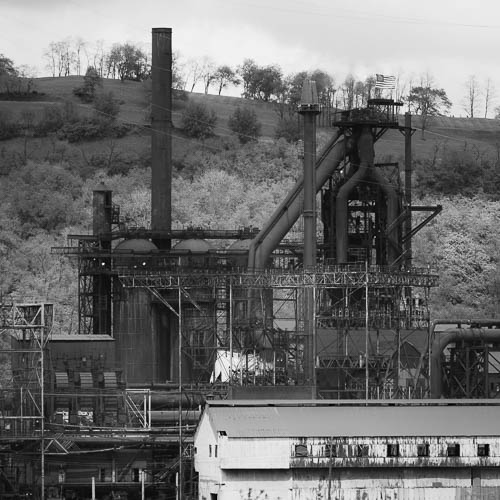
Updated May 11, 2021
What do Kennywood Park (an amusement park outside of Pittsburgh), and the Tower of London have in common?
Well, at each of these places, I heard a shout-out to British Major General Edward Braddock.
At Kennywood Park , a statue and also a Pennsylvania Museum and Historical Commission (PMHC) sign honor General Edward Braddock. When I rode the train around Kennywood, I ate a chocolate brownie as the train intercom extolled the park’s fun rides and told us about Braddock’s Defeat.
Braddock’s army and its Native American allies marched ON the land that became Kennywood Park in 1755. They crossed the Monongahela River (the Mon) at what is now Kennywood. After they crossed the river, a French army and its own Native American allies attacked them. Braddock’s army retreated.
Braddock died. A lot of his men died or taken prisoner. Women who followed the army as cooks and laundresses also died or were taken prisoner.
You can actually find a much better synopsis than mine with a 30 second Google search. A lot of Google searches refer to this as the “Battle of the Monogahela.”
However, I have an anecdote! I went to London and I toured the Tower of London. The Yeoman Warder (“Beefeater”) who was assigned to docent my tour group started off by saying:
“Is anyone in this group from Pennsylvania?”
The Yeoman Warder said something about the Yeoman’s own involvement in the Coldstream Guards. He specifically mentioned the grave of “General Braddock.”
Well, then the Yeoman Warder moved on to a different subject (after all, we were at the TOWER OF LONDON). I had to look up the Coldstream Guards later.
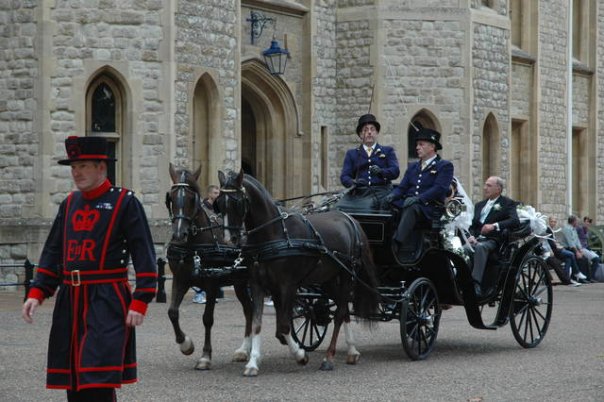
Turns out that General Braddock also belonged to the Coldstream Guards. Officers from the Coldstream Guards actually travelled to Pennsylvania to dedicate a new monument at General Braddock’s grave in 1913. So, they did this less than a year before World War I started.
Now, just to be clear, General Braddock wasn’t buried at the actual battlefield. He wasn’t buried at Kennywood Park. Braddock was wounded at the battlefield that is behind Kennywood. He died of his injuries later, and miles away, during the retreat.
A young George Washington served as an officer on Braddock’s staff. Washington had to oversee Braddock’s burial.
The Coldstream Guards dedicated a new monument at Braddock’s actual grave in Fayette County in 1913. They actually travelled from the United Kingdom to Pennsylvania and attended the dedication ceremony. Here is an old photo that I took of the actual grave in Fayette County.
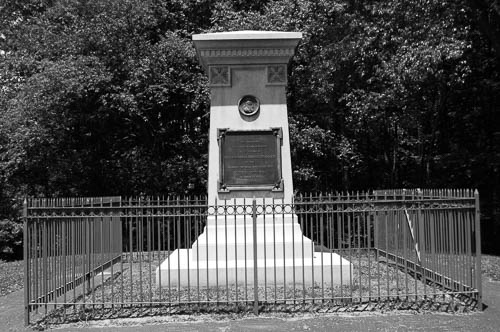
Here is a close-up of the Coldstream Guards’ regimental badge on Braddock’s grave monument:
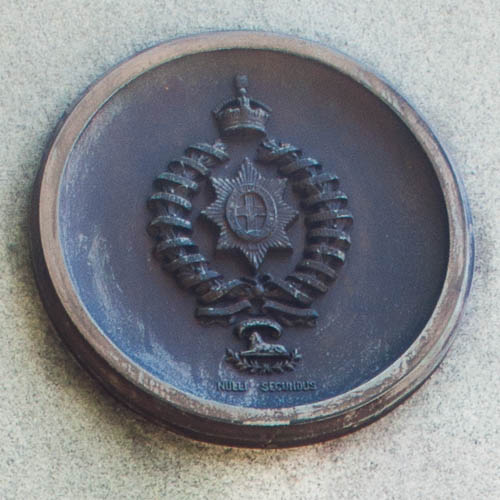
I really wish that I could blog here that the Coldstream Guards also visited Kennywood Park in 1913 during their trip to see Braddock’s grave. A trip to Kennywood in the summer before World War I! Sadly, I have not found any mention of any Coldstream Guard visit to Kennywood during any of my 20 minute Google searches.
That would be a fun story to tell, if it were true.
I don’t have anything else to add here about the Tower of London, the Coldstream Guards, or Braddock’s actual grave in Fayette County.
The rest of this is about Kennywood Park, the Battle of the Monongahela battlefield, and the bike trail that runs between these two.
I discovered a now-defunct travel blog in which the blogger visited this area because he had an interest in the battle’s military history. In his blog, he RAILED against “developers” for completely carving up the actual site of the Battle of the Monongahela. (There’s actually a “Braddock’s Battlefield History Center” IN Braddock, PA, near the site of the battle. However, I think that this blogger meant that he wanted to visit someplace where one could retrace the actual battle, like one can do at Gettysburg.)
I, too, find it a shame that people today can’t visit the actual battlefield and walk where the two armies fought.
But, the thing is –
The developers who failed to preserve the battlefield were . . . business associates of Andrew Carnegie and Henry Clay Frick. The battlefield was “ruined” . . . at the turn of the century. The turn of the LAST century. During the Industrial Revolution.
If you aren’t familiar with Henry Clay Frick’s treatment of organized labor, then Google “Homestead Strike.”
Also, go ahead and Google “Johnstown Flood” and “South Fork Fishing and Hunting Club.”
I mention all of this just to point out that “ruining the site of the Battle of the Monongahela” wasn’t the very worst allegation ever connected to Henry Clay Frick and Andrew Carnegie.
So, how did the business activities of Henry Clay Frick and Andrew Carnegie “ruin” this battlefield?
Well, they built a steel mill on top of it.
They built the U.S. Steel plant known as the Edgar Thomson Steel Works on top of the battlefield.
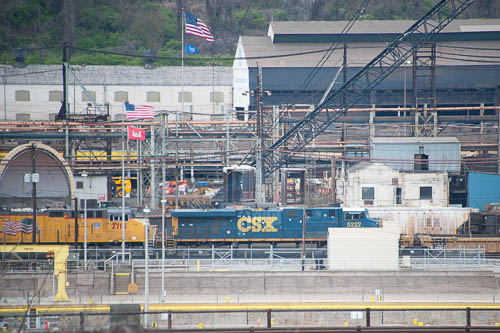
I mention all of this because a bike trail – the Great Allegheny Passage (GAP) -runs along the Mon River behind Kennywood Park. You can ride on a path directly behind the roller coasters. You can look across the river and see this U.S. Steel plant .
You can ride past a 1906 locomotive roundhouse in McKeesport.
Here’s some photos of said roundhouse.
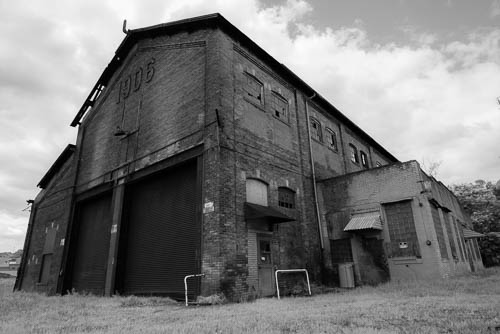
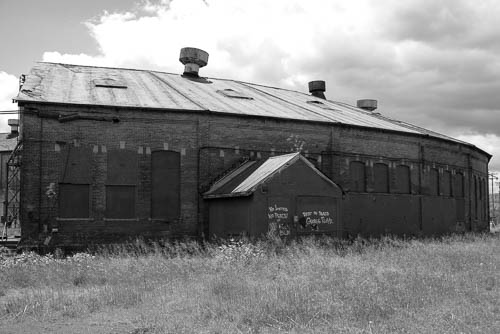
Jonathan took much better photos than I did. You can view Jonathan’s photos here, at our other blog.
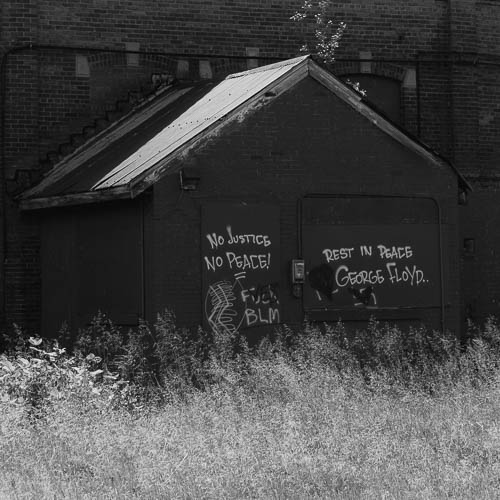
One thought on “They Built a Steel Mill on Top of It . . .”